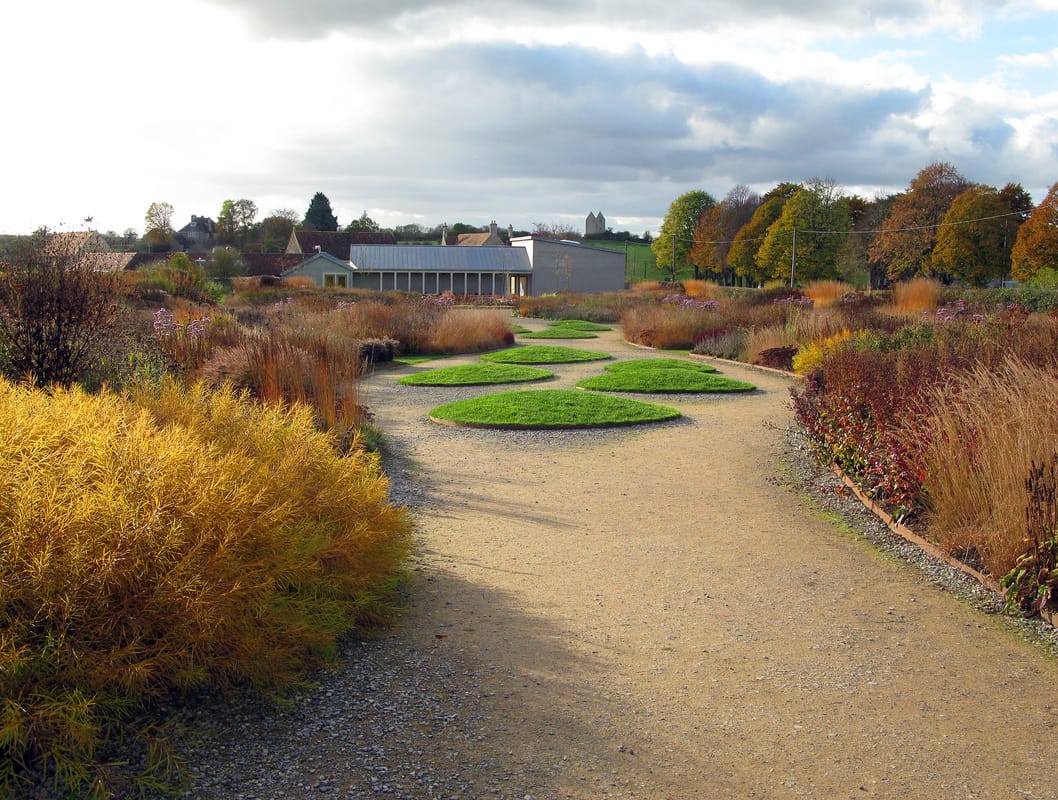|
To grow gracefully, live gracefully and die gracefully: nurseryman and garden designer Piet Oudolf expects nothing less from the plants that he puts to work in his extraordinary landscapes. One of the most influential plantsmen and designers of the last few decades, Piet Oudolf's name is synonymous with the 'New Perennial' movement. This planting style focuses predominantly on herbaceous perennials and ornamental grasses, favouring those which offer year-round form and texture over colour. In early November 2016 I visited Oudolf Field at the Hauser & Wirth Gallery in Bruton, Somerset. The garden has been open only for two years, but the planting is already successfully well-established. In the low light of a late Autumn, with blue skies, intermittent clouds and long shadows, it looked nothing short of magnificent. I mentioned that colour is not the primary consideration for this style of planting, also known as 'Naturalistic' and 'Prairie-style'. However, Oudolf's skill and experience delivers not only structural and textural interest for almost the entire year, but also weaves into the landscape the most beautiful colours, creating tapestries of astonishing richness and rhtyhm. The designer also makes clever use of 'borrowed landscapes'. Although the trees in the images above and below are in neighbouring fields, their forms and colour have been drawn in to the scheme, to frame different views of the garden. A hedge runs the perimeter of the field. Oudolf is famed for his use of perennials but acutely understands the importance of shrubs and trees for framing views and creating backdrops. In the view below, to the East of the space, the colours and textures of the dying grasses sing out against the neutral dark green hedge. Planting as art & scienceAs well as selecting varieties and cultivars for their structure, texture and colour in all seasons, Oudolf has also assessed each plant for polite behaviour towards its neighbours. The majority of plants here are relatively self-contained: they do not elbow into or overshadow the space of their companions, nor compete for nutrients and moisture, or self-seed about with abandon. If you compare one of Oudolf's concept planting plans with the resulting garden, its similarity, even years later, is the stuff of legend. This is extraordinarily clever stuff. Naturalistic planting in the gardenOudolf Field is as much a work of art as the pictures and scultures exhibited inside the gallery, rather than what we might traditionally term 'a garden'. However there are many ideas here that will translate successfully into a domestic garden: the way in which certain plants catch and filter the light; the architectural beauty of leaf shapes, flowers and seedheads; the shape and form of elegant Winter skeletons. With creative interpretation these themes can be adapted to work with shrubs and trees for year-round structure and interest. Add to the mix your personal favourites, and your outdoor space will become a uniquely beautiful garden for all seasons. So you can wander the garden with booklet in hand and make a note of the plants you like best, in the knowledge that they have all passed the test of time in the West Country climate. Oudolf Field in WinterSix weeks later I returned to revisit both the exhibition and the Field. In mid-December the garden had faded to colours more akin to the mineral than the plant kingdom. There were tones of sandstone, purple slate, and rich clay browns, offset against brilliant green grass. Some plants had faded to coal black, or dried to the palest silvery greys and ivories. In the Winter sunlight they actually glittered, like minerals and ores. Most of these plants were technically dead, but were still holding their forms as gracefully as they did in the height of Summer. At some point in January-February the dead plants will need to be cut down so that the new growth can come through unhindered. If you are planning a visit before Spring and want to see the planting, it will be worth giving Hauser & Wirth a call to find out when this happens. Before leaving the field I glanced back across the pond, and was captivated by the cleverness of how the curve of the pond mirrors both the line of the first planting bed, and the sweep of the grassy path behind. From whichever direction you view this design, and whatever time of year, you see something new and beautiful. I can't wait to go back in Spring.
0 Comments
Your comment will be posted after it is approved.
Leave a Reply. |
AuthorCaroline Butler is a garden designer based in Bristol Archives
October 2018
Categories |






